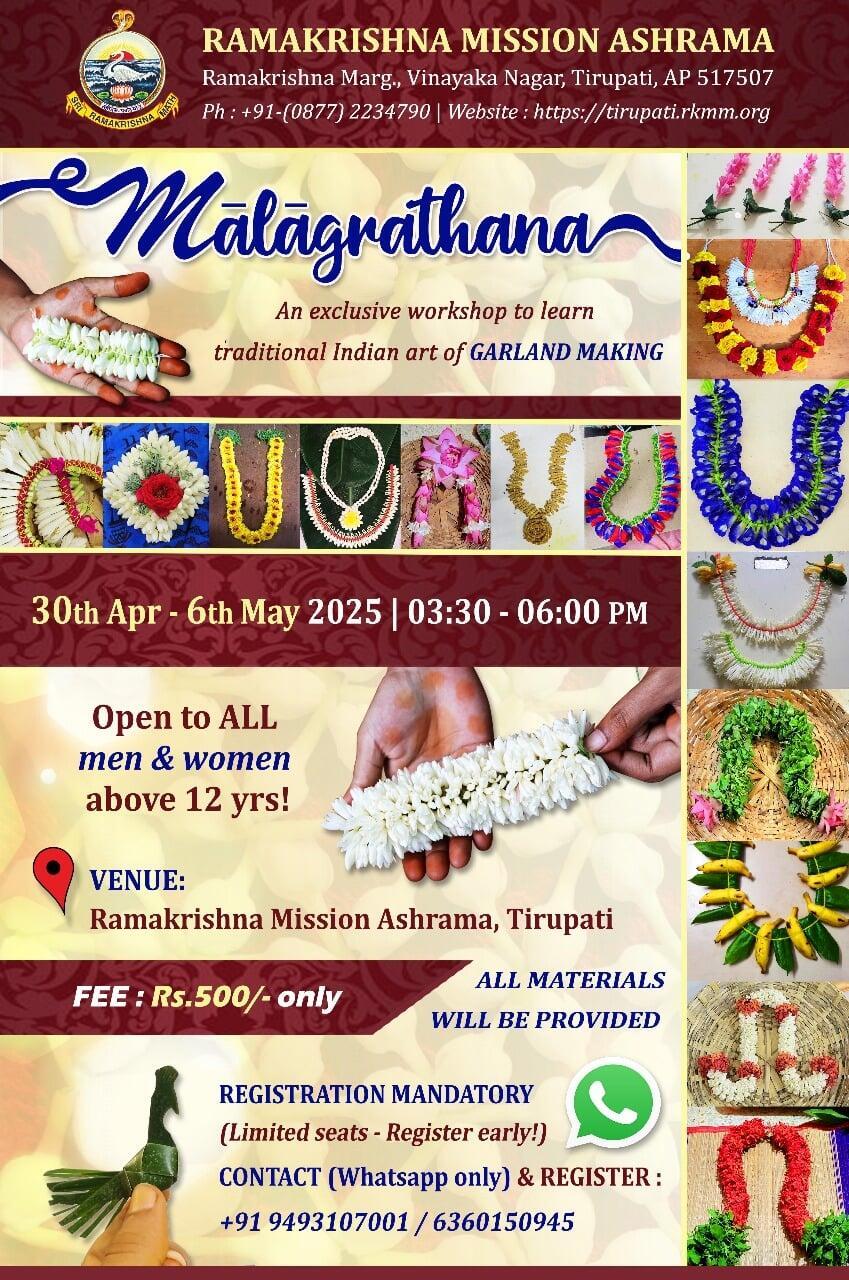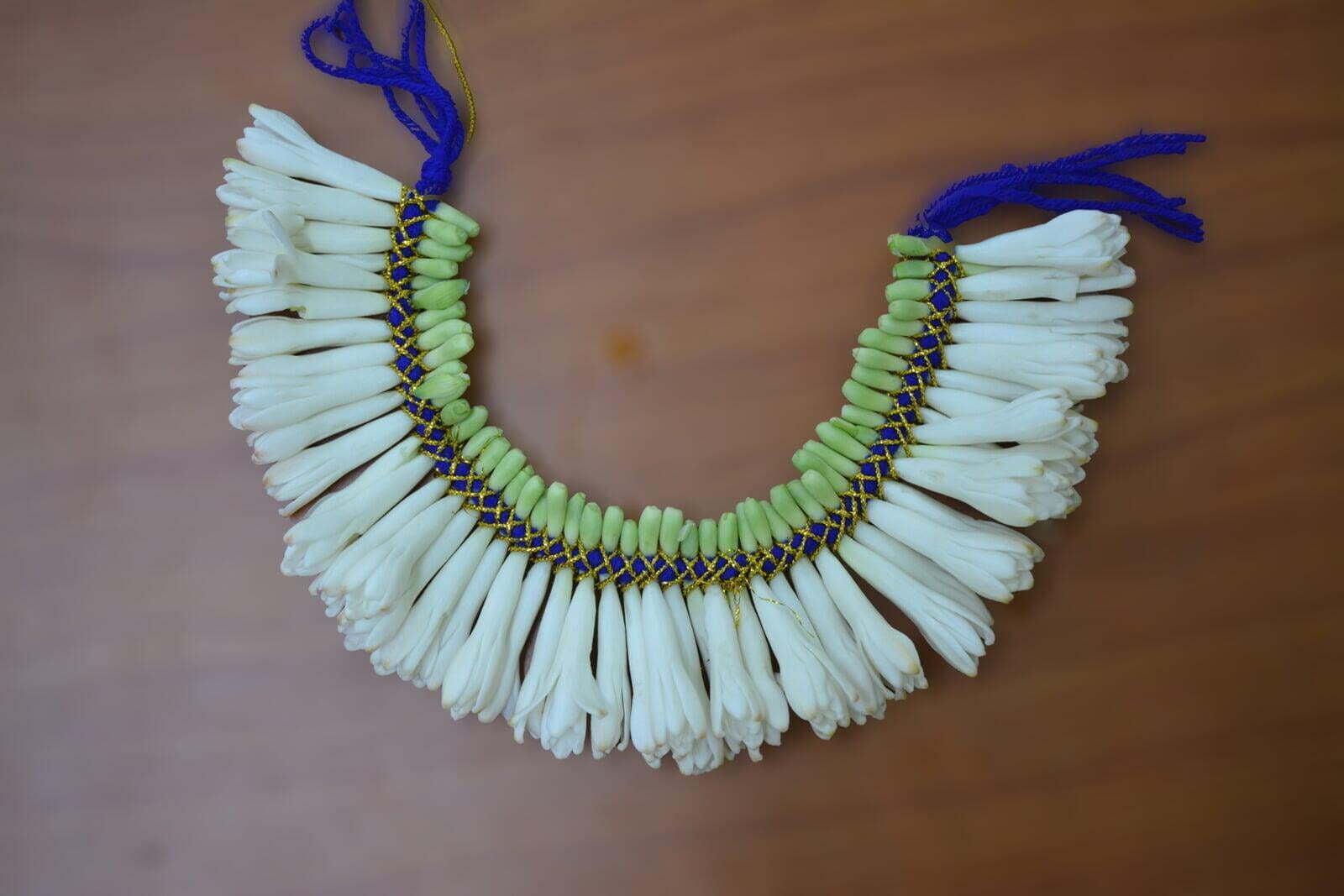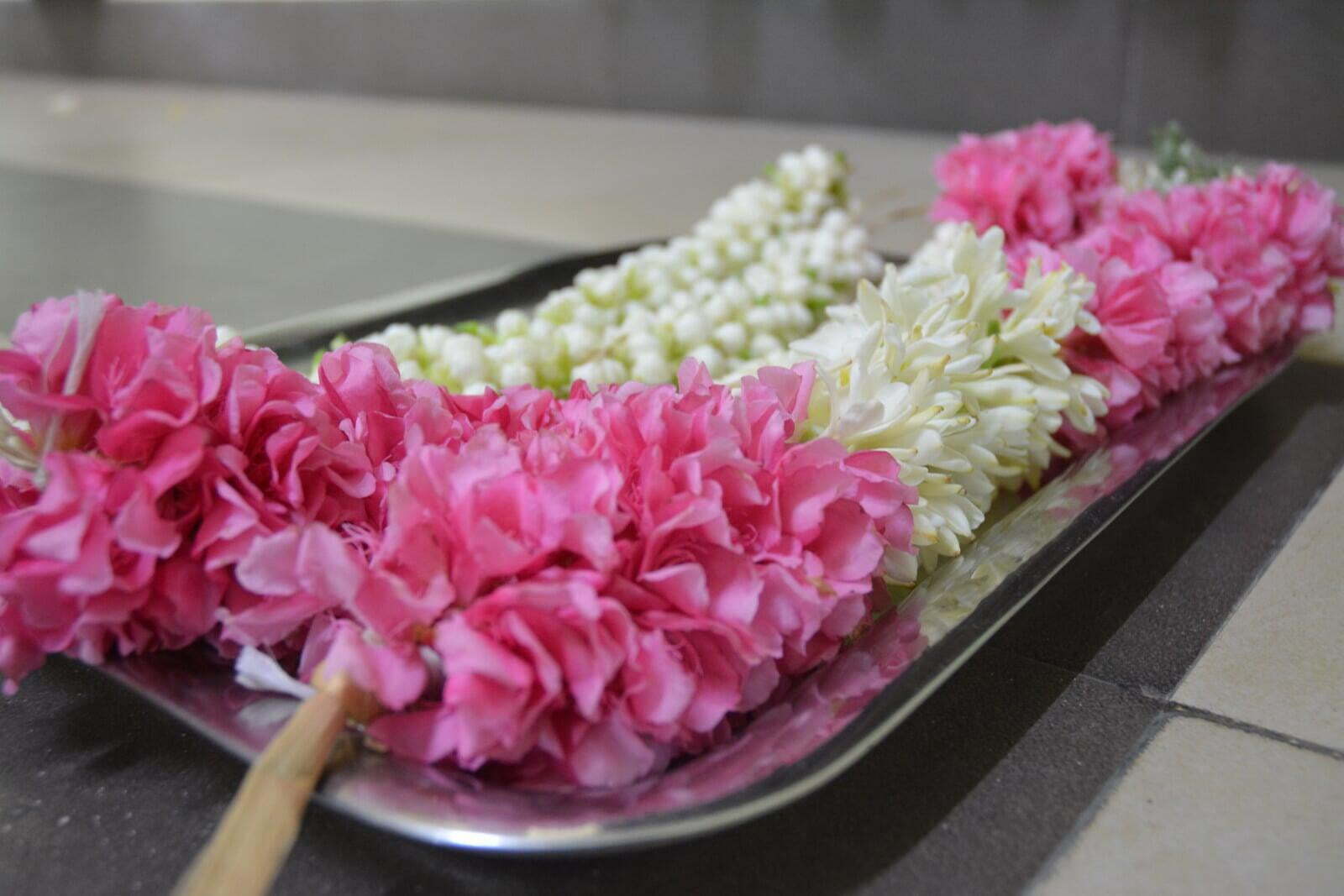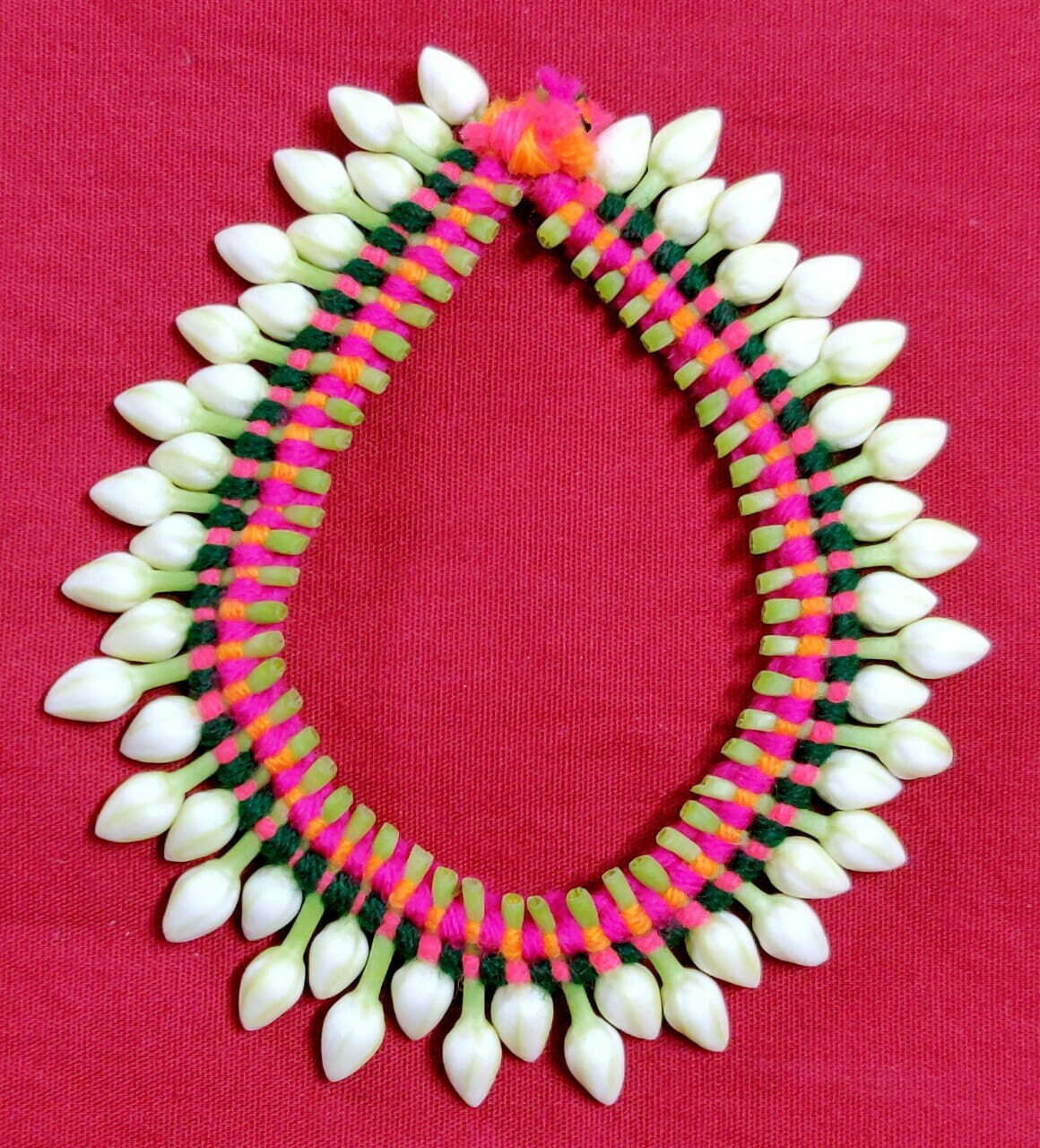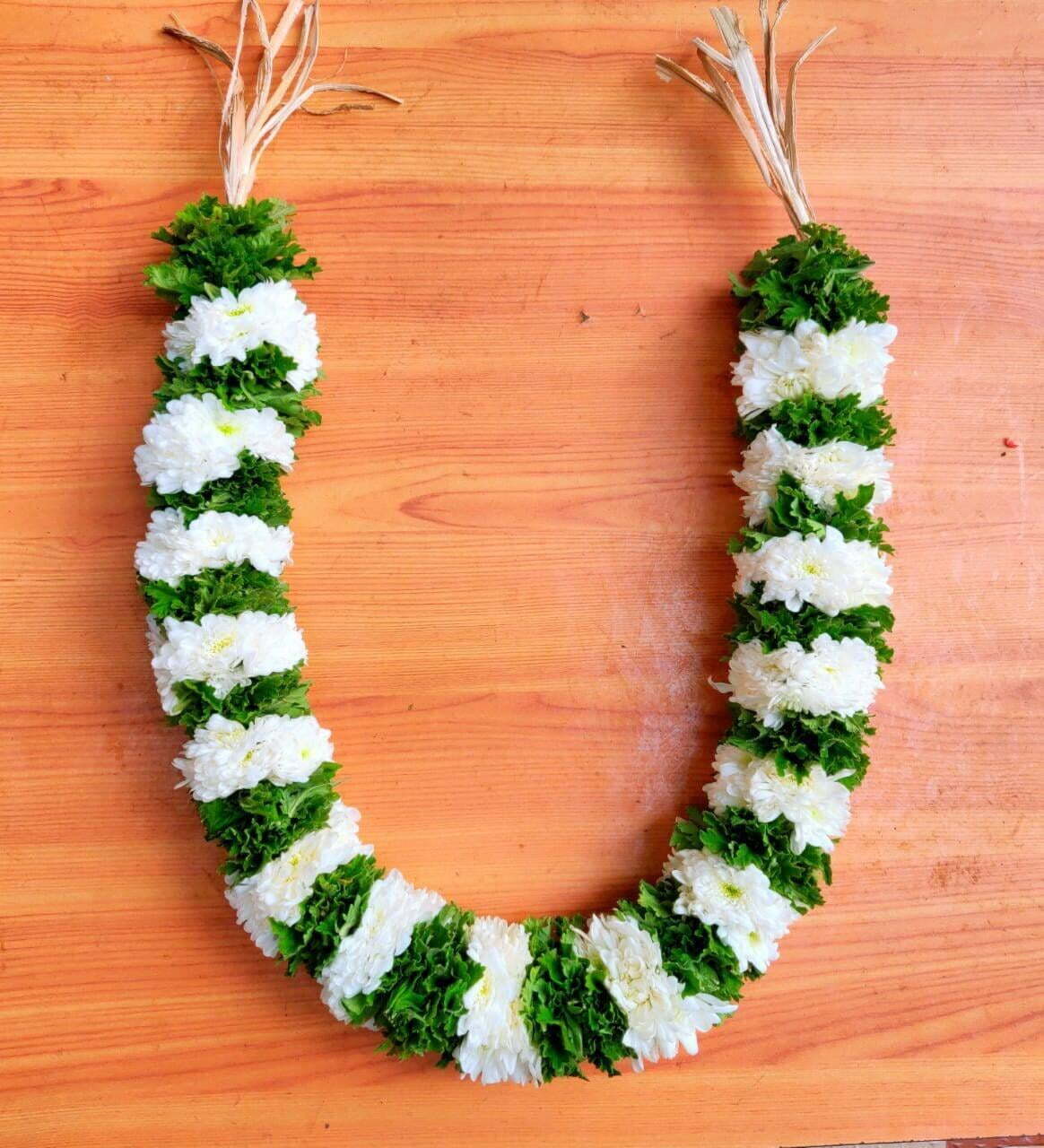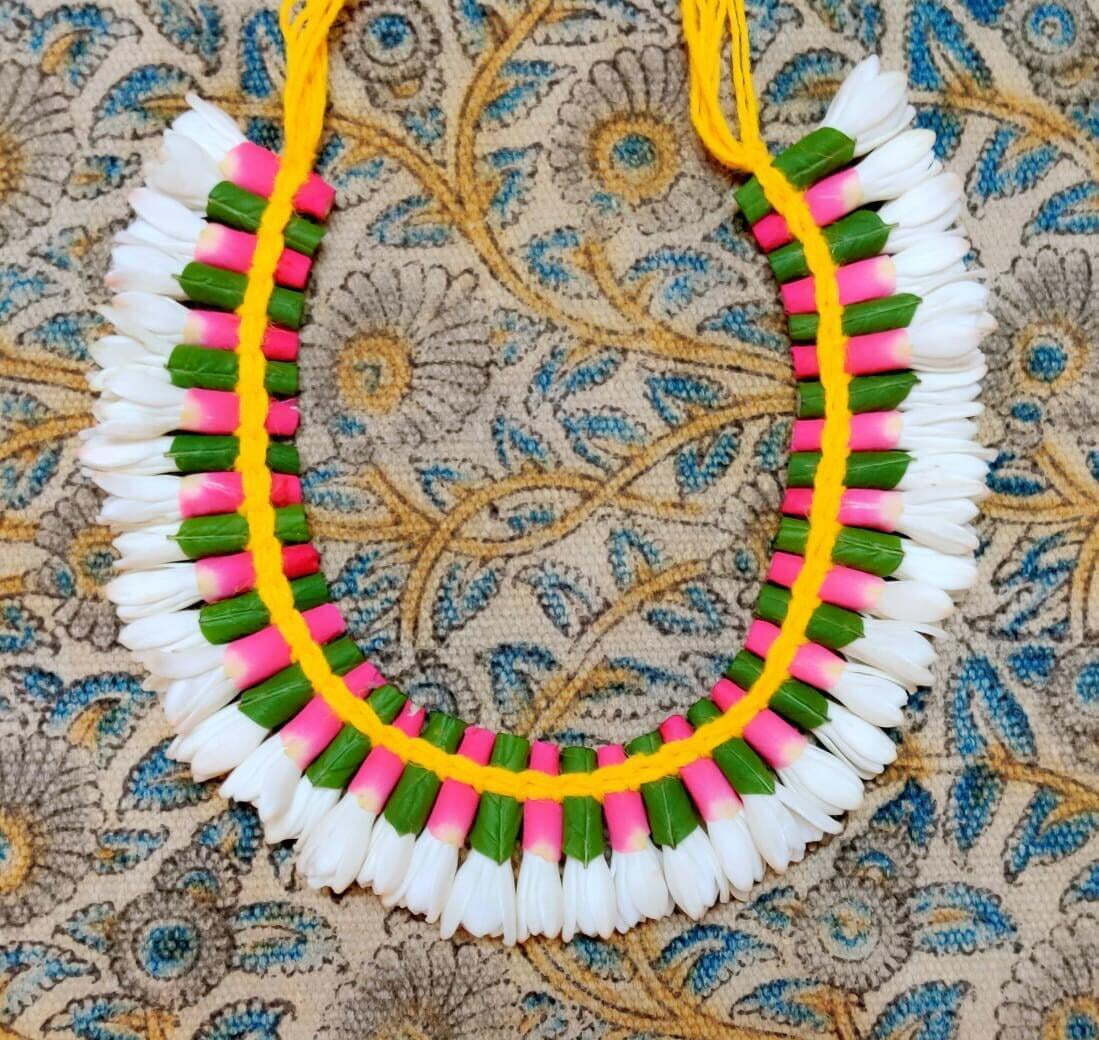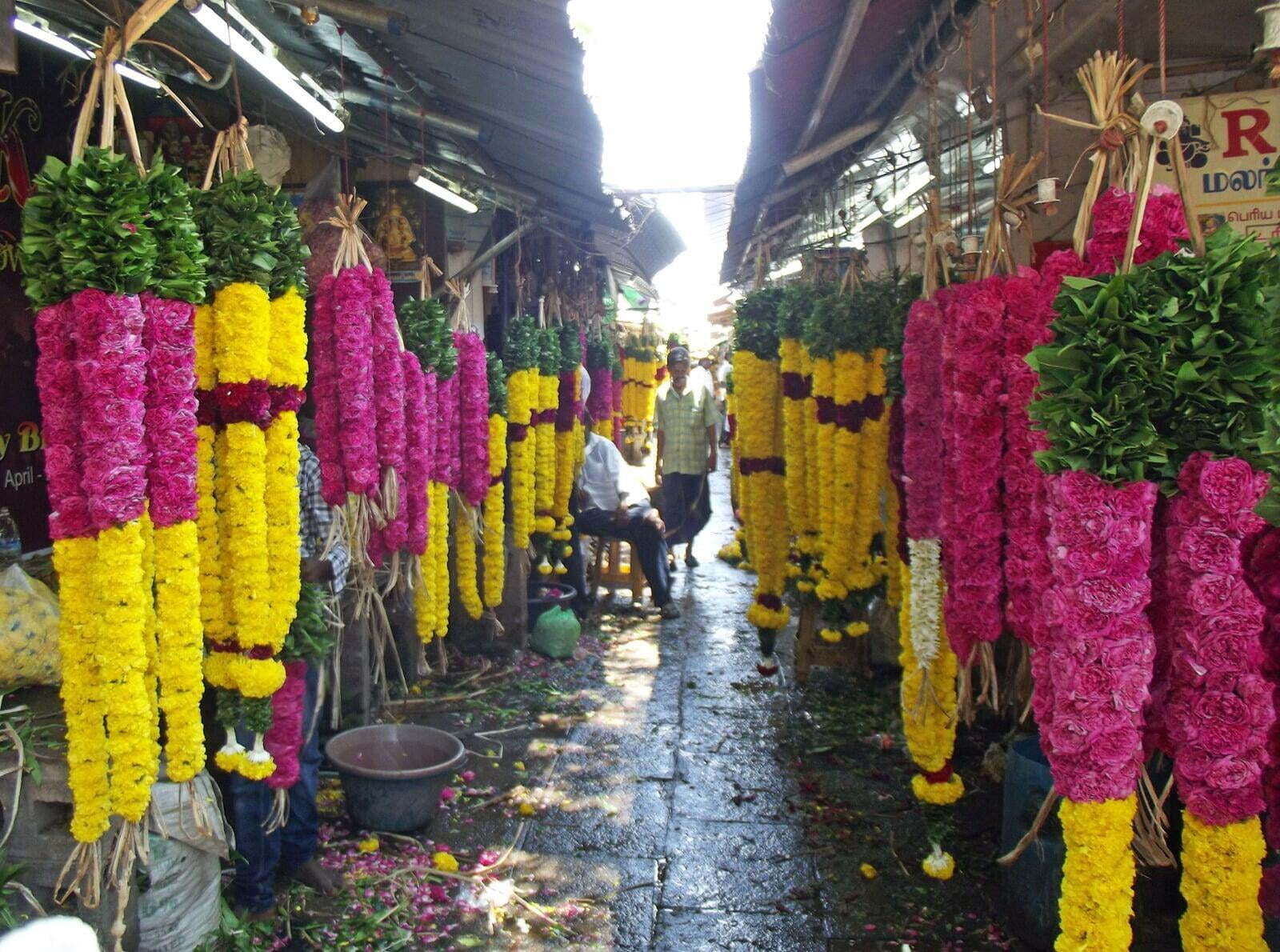Open to all Men & Women above 12years
Workshop on Ancient Indian art of garland making
Flowers stand an important place in Indian culture and lifestyle since time immemorial. They reflect religion, spirituality, fashion, tradition, joy, grandeur, art and all auspiciousness. There is no worship, ritual or festival in India that is complete without flowers and garlands.
Garland making is no simple skill! The art of stringing flowers into garlands in different patterns and methods is indeed listed as one among the 64 praised art forms. This fragrant art, not merely contributes to aesthetic value, but voices the rich history and heritage of this country. As we stroll around the various temple towns of India, we learn that it is not just flowers that are strung together, but volumes of history, culture, tradition, and spirituality that are weaved together in a garland. Many scriptures of Bhakti and worship, laud this art form as a sacred service (Pushpa Kainkarya) to God that aids one’s spiritual progress. Indeed, there are exclusive ancient treatises like the Pushpachintamani, Pushpa Maahaatmyan, Parijatamanjari, PupphajoniSattha, etc that present to us a tabulated data of which type of flowers and garlands are significant to specific deities. There are certain patterns of garlands adorned to deities at many ancient temples even today, in reverential remembrance of historic incidents. Like the Srirangam’s Killi Maalai, the type of garland offered to deities during important occasions divulge glorious legends of the temple’s history. Further, along with being an eminent symbol of religion and spirituality, flower garlands have also been a mandatory daily dressing accessory used by men and women of ancient India. Historic texts like the Sangam literature describe the kind of flowers and garlands worn by people during different activities, moods and purposes.
